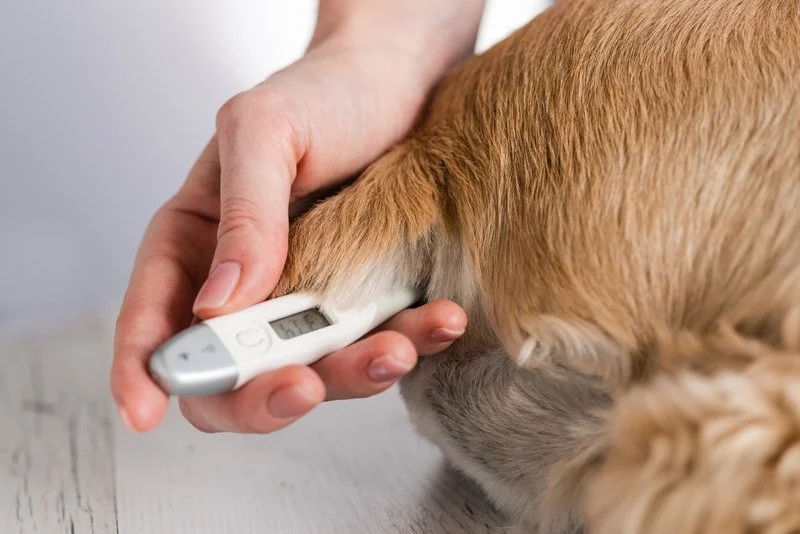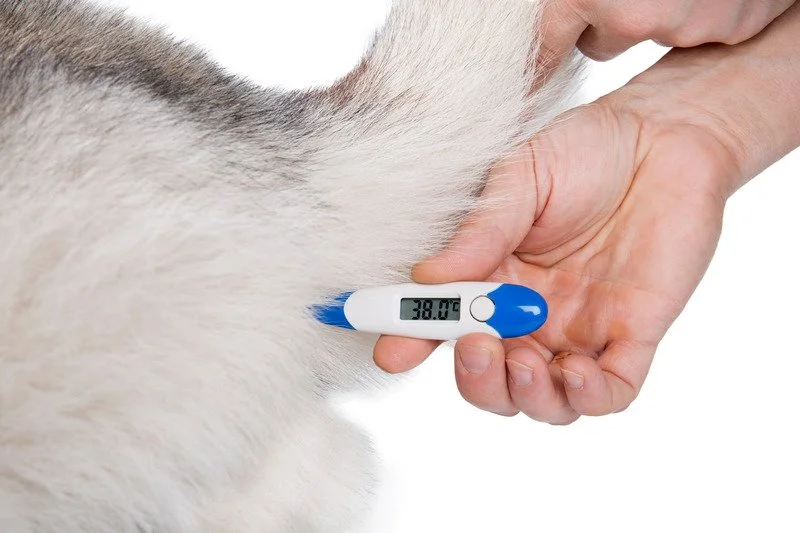How to Check a Dog’s Temperature With Ease
Like humans, dogs have an average temperature that is important to their overall health; but unlike humans, it’s not always easy to check a dog’s temperature.
There are plenty of thermometers you can use to check your dog’s temperature, but the actual act of doing it and getting reliable results means a thermometer in their backend.
The good news is that there are products entering the market that will make it easier and still cost effective. Currently, having anything other than a thermometer that goes into your dog’s backend is rather costly.
The good news is, you can help make it easier by doing it regularly and having plenty of treats. Patience, time, and consistency will help you in this process.
The Importance of Your Dog’s Temperature
The average dog temperature is between 101 - 102.5, and your dog will have a resting baseline within that range. It is important to know what YOUR dog’s resting temperature is so you can best advocate for them.
A resting temperature in a dog means that they have not been active for at least 30 minutes. Activity in dogs can elevate their temperature along with their heart rate.If you have a dog whose temperature usually runs low and when you take their resting temperature, it registers at 102, then you have a reason to be concerned. You might need to contact your vet, and you should think about checking it every hour or two to see if it stays elevated or comes back down to their normal.
Whereas, if you have a dog who normally runs at 102 and you take their resting temperature at 102.3, it wouldn’t flag an immediate concern. It’s still worth double checking in a couple hours to make sure it’s not continuing to rise.If you are highly active with your dog, it might be worth taking their temperature before your activity, and then in the middle, and again at the end. This will give you a full gauge on how activity affects their temperature.When you know your dog’s average temperature, you can feel more confident about their overall health.
How to Check Your Dog’s Temperature
We mentioned that the main way to take a dog temperature is via the backend. This isn’t necessarily the easiest way, but unless you have a special thermometer, it is the most reliable way.
Taking dog temperature with a rectal thermometer
Be sure to use a digital thermometer for this. They work faster than the old mercury kind. You also want to get the treats ready because many dogs want to sit when you try to insert the thermometer into their rectum, but they need to stay standing or being laying down.
Before you insert the thermometer, put some vaseline on it or another form of lubricant that is pet friendly. The easier it slides in the better and the faster it can start working.
Pet your dog and encourage them while you take their temperature. Give them some treats, and try not to force them to stand. This might take some patience and some training, but it’s worth it. It will also help when they are at the vet and the vet has to take their temperature.
Taking dog temperature with an ear thermometer
If you are lucky enough to have an ear thermometer for your dog, be sure you use it properly to get a reliable result. It’s also important to use a pet specific ear thermometer.
Ear thermometers work by measuring infrared heat waves that emit from the ear drum. You need to get the thermometer fairly deep into the ear canal to get an accurate reading. We recommend taking both ear and rectal temperatures when you first start out to ensure you are getting accurate results.
Taking dog temperature with an armpit thermometer
If it’s the only way to get a temperature on your dog, you can do an armpit (or leg-pit as we like to call it) reading with a regular digital thermometer. These readings tend not to produce consistent results and thus are less reliable.
There is a reliable armpit thermometer that was introduced at a pet trade show this year. We’ll be watching for it to be available to consumers since we believe a reliable armpit thermometer could be a game changer for tracking your dog’s temperature.
For now, prioritize a rectal temperature followed by an ear temperature, if you have a pet ear thermometer.
Don’t forget to keep a log of your dog’s temperature. Always track their resting temperature, and if they are active it’s a good idea to know their active temperature. These results written down will assist you in having conversations with your vet, as well as point out any concerns quickly.
When to Seek Help for My Dog’s Temperature
Your dog’s average temperature is just one vital sign to know, and when it’s off, you should seek the advice of your veterinarian. If you have never taken your dog’s temperature, it’s not too late to start.
If your dog’s temperature is too low, hypothermia is a risk. Usually a dog needs to be exposed to cold temperatures for an extended period of time to experience hypothermia. It’s good to know it’s possible, but usually overheating is more of a risk.
When your dog’s temperature gets too high, better known as a fever, then you are looking at possible heat exhaustion or even worse, heat stroke. Summertime is a time to be aware of warm weather dangers, and thus, situations where your dog may overheat.
When a dog is overheating you may see these symptoms:
Excessive panting
Tongue hanging out of mouth
Cheeks pulled back
Extremely red, like brick red, gums
Possibly vomiting, diarrhea, weakness or stumbling
Seizures, tremors, or loss of consciousness can happen with heat stroke.
Notice the early signs and take action right away if your dog’s temperature is registering high or low.
Dog temperature is just one of the vital stats that we encourage you to monitor. Join us in our Pet Health 5 monthly reminder and together we can start tracking our pet’s health. We’ll send you a reminder on the 5th of each month with a checklist of what to do and how to do it, and you take the time to check your dog’s health stats and log them.
Pet health, dog health, is an important aspect of helping our dogs live long lives. You can start today by taking your dog’s temperature and signing up for Pet Health 5.


